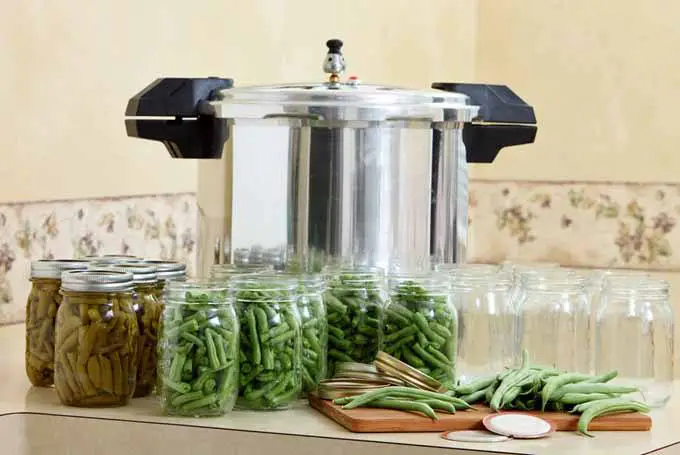For many home chefs, the process of canning and preserving their own food is the secret to how they get such delicious tastes. The most traditional way of canning food is using the pressurized method however a canning water bath seems to be gaining some popularity for itself.
If you’re completely new to the process of preserving food or have just never tried water bath canning for yourself, you’re probably full of questions. How do you do the technique? What are its benefits? What are the best fruits and vegetables for this type of method?

This simple guide is here to answer all of those questions and more, hopefully opening your eyes to a new way of creating delicious food fresh from your kitchen. There are some cautions you need to take when doing this and any other kind of food preparation though so you need to educate yourself before you begin
As we become more and more concerned with the chemicals and preservatives found in the food we buy at the store, learning simple methods like this to can your own food can have so many benefits. Whether you’re looking to save money, take up a new hobby, or just get fresher and tastier foods in your pantry, water bath canning is a great option to look into.
What Is Water Bath Canning?
When you hear the term water bath canning you probably jump to some sort of conclusion about canning jars while sitting in your bathtub, but it’s actually nothing like that. Water bath canning refers to a method where you seal containers or jars with food product inside and then submerge them into boiling water.
While it might sound simple enough, there are a few factors that come into play which will determine how exactly you go about the process. You’ll need to consider the food that you have inside, the size of the jars you’re using, what type of jars, and how much time is required for them to cook in boiling water.
The idea is that the temperature inside will never exceed boiling point or 212 degrees Fahrenheit as this is the maximum temperature of the boiling water, so there’s no risk of them cooking too high.
However, there are certain risks involved with canning the wrong types of vegetables and fruits inside, which has even led to death previously, so it’s a process that needs to be taken very seriously.
How Does It Differ From Pressure Canning?
Pressure canning is the most common method for preserving food as its capable of reaching 240 degrees Fahrenheit which makes it safer in a lot of regards. However, you need a specified pressure canner device in order to do it safely, which is why many people prefer to use the water bath canning approach.

However, be warned that there is a vast difference in what pressure canning and water bath canning can do.
Because pressure canning temperatures get up to 240 degrees it makes this method suitable for canning all kinds of fruits, vegetables, meats, and other food products because it successfully kills off bacteria, where water bath canning is limited to only high acid foods.
The reason that so many people choose to only can these high acid foods and just use their water bath canning process is because of its many benefits, including:
Although water bath canning is relatively easy to do, you still need to be cautious when doing any kind of food preparation. Because hot water bath canning comes with some risks, it’s essential that you only use the right vegetables for this device.
The Vegetables Perfect For Water Bath Canning
Some might find the water bath procedure limited in what you are able to can, however, there’s actually quite a lot of good food that you can use. Here are some of the food products you can use like water bath canning tomatoes and more.
The aim here is to focus on high acid foods, so if you’re unsure about what you’re able to can then do some research on it. There are plenty of helpful guides from professionals who preserve food and they can show you the nutritional content and acid levels of some popular canned food products.
An Easy Way To Conserve
Water bath canning is a process that has been around for many years, and thanks to its simplicity it’s something that’s easy enough for anyone to do. There are plenty of benefits to canning your own food provided you are doing it the right way, and it won’t cost much at all to get started.

When choosing this method of preserving food you really need to be careful about what you’re canning, as something seemingly harmless like water bath canning green beans isn’t recommended. Many people choose to use both methods of preservation and save their pressure canner for the other products that don’t really suit this style.
As we pay more attention to the foods that we’re putting in our bodies and begin to treasure the taste of fresh and homemade goods, we can expect to see the water bath canning method becoming even more popular.
There’s no better way to get delicious tasting condiments and jellies than by experimenting and making them for yourself, and you can even make a lucrative side business selling them if you’re good enough.
Resources:FoodNetworkInstructables




